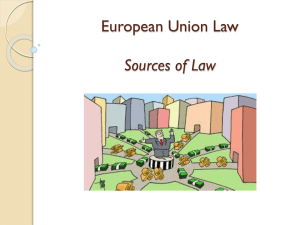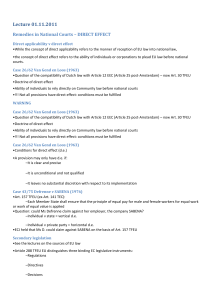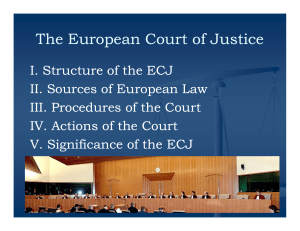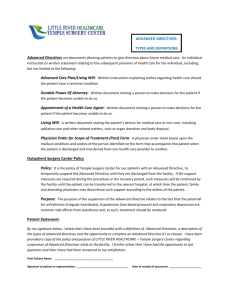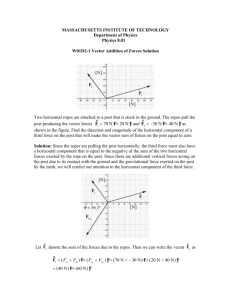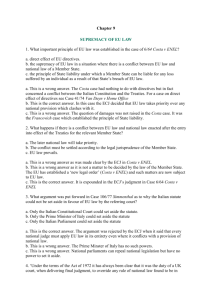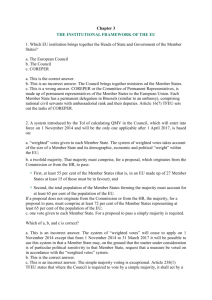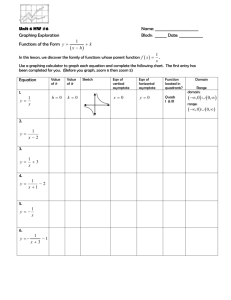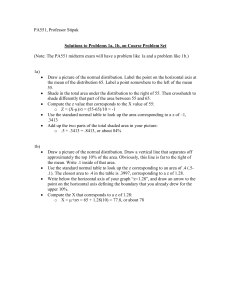Chapter 10 DIRECT EFFECT OF EU LAW 1. What are the conditions
advertisement
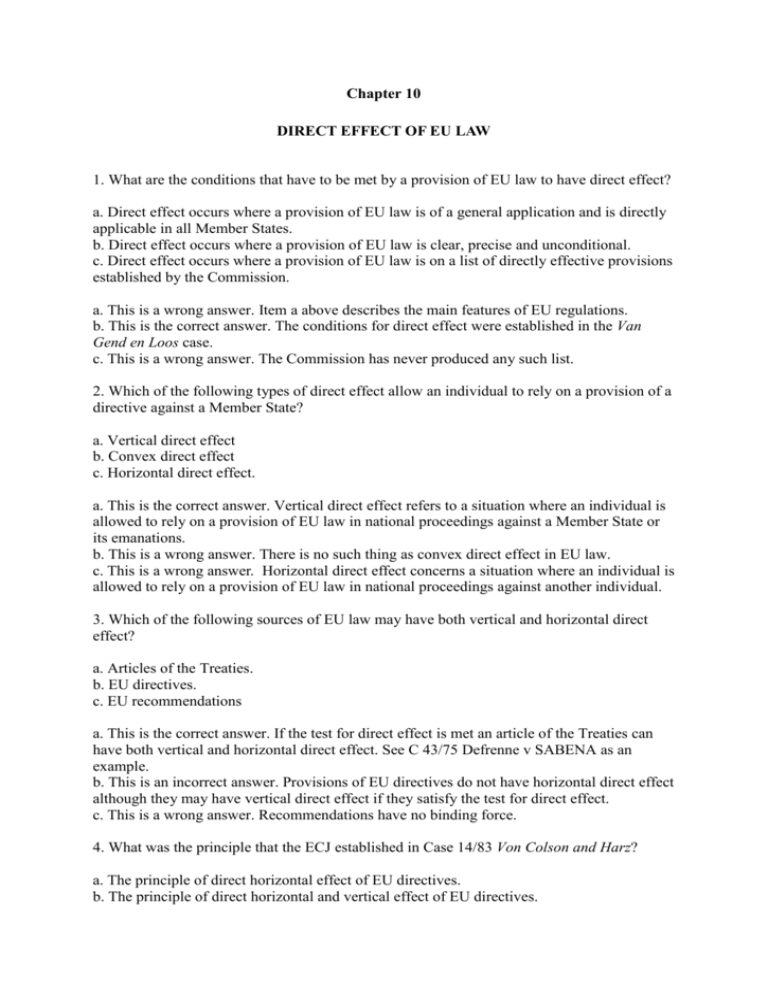
Chapter 10 DIRECT EFFECT OF EU LAW 1. What are the conditions that have to be met by a provision of EU law to have direct effect? a. Direct effect occurs where a provision of EU law is of a general application and is directly applicable in all Member States. b. Direct effect occurs where a provision of EU law is clear, precise and unconditional. c. Direct effect occurs where a provision of EU law is on a list of directly effective provisions established by the Commission. a. This is a wrong answer. Item a above describes the main features of EU regulations. b. This is the correct answer. The conditions for direct effect were established in the Van Gend en Loos case. c. This is a wrong answer. The Commission has never produced any such list. 2. Which of the following types of direct effect allow an individual to rely on a provision of a directive against a Member State? a. Vertical direct effect b. Convex direct effect c. Horizontal direct effect. a. This is the correct answer. Vertical direct effect refers to a situation where an individual is allowed to rely on a provision of EU law in national proceedings against a Member State or its emanations. b. This is a wrong answer. There is no such thing as convex direct effect in EU law. c. This is a wrong answer. Horizontal direct effect concerns a situation where an individual is allowed to rely on a provision of EU law in national proceedings against another individual. 3. Which of the following sources of EU law may have both vertical and horizontal direct effect? a. Articles of the Treaties. b. EU directives. c. EU recommendations a. This is the correct answer. If the test for direct effect is met an article of the Treaties can have both vertical and horizontal direct effect. See C 43/75 Defrenne v SABENA as an example. b. This is an incorrect answer. Provisions of EU directives do not have horizontal direct effect although they may have vertical direct effect if they satisfy the test for direct effect. c. This is a wrong answer. Recommendations have no binding force. 4. What was the principle that the ECJ established in Case 14/83 Von Colson and Harz? a. The principle of direct horizontal effect of EU directives. b. The principle of direct horizontal and vertical effect of EU directives. c. The principle of the interpretation of national law in conformity with EU law. a. This is a wrong answer. In Case 41/74 Van Duyn the ECJ established the principle of direct effect of EU directives. b. This is a wrong answer. In Case 152/84 Marshall I, the ECJ held, for the first time, that directives can have only vertical direct effect. This has been confirmed in numerous cases although there are some exceptions to this principle. c. This is the correct answer. In Case 14/83 Von Colson and Kamann, the ECJ emphasised that national judges are obliged to interpret national law in the light of the objectives of EU law. 5. Which case developed the principle of indirect effect following on from Case 14/83 Von Colson & Harz? a. Case C-106/89 Marleasing b. Case C- 6 & 9/90 Francovich & Boniface c. Case 26/62 Van Gend en Loos a. This is the correct answer. The Marleasing judgment placed an obligation on national courts to interpret national law in conformity with EU law as far as possible. This principle was further developed in Joined Cases C-397-403/01 Pfeiffer. b. This is a wrong answer. The Francovich case established the principle of State liability and did not involve the principle of indirect effect. c. This is a wrong answer. In Case Van Gend en Loos the ECJ established the principle of direct effect.
